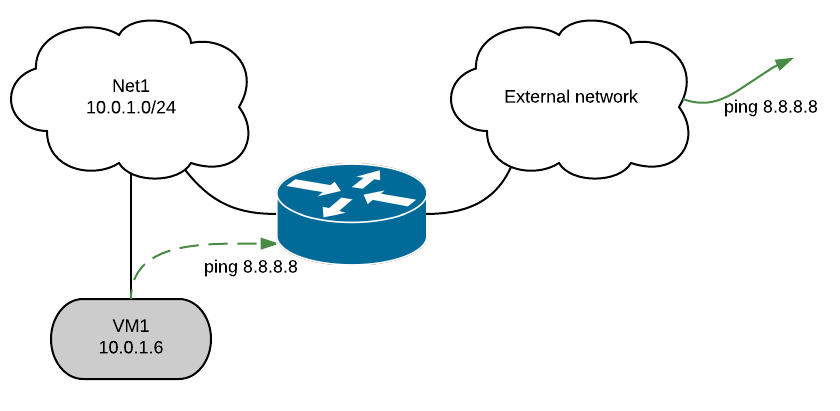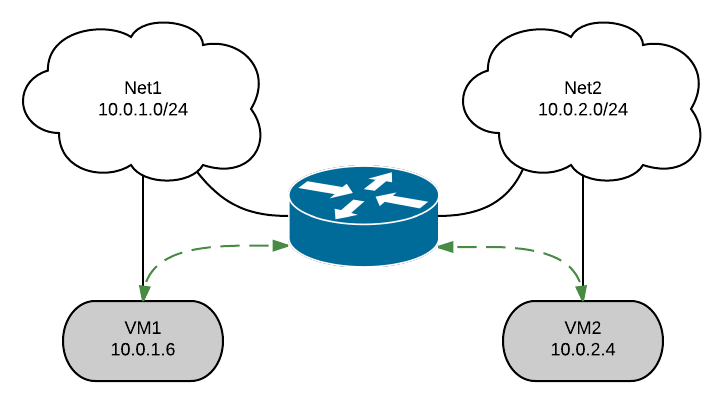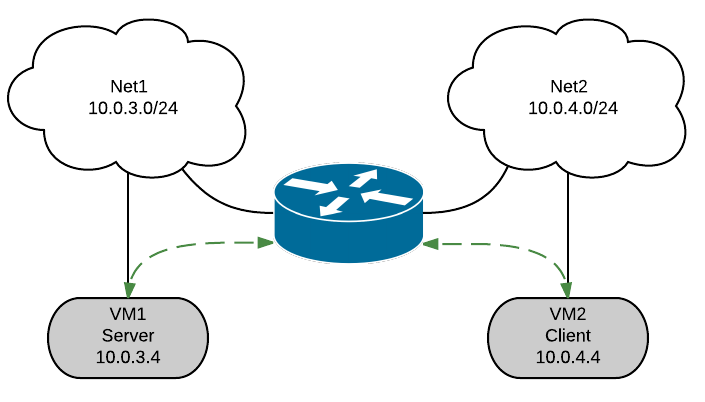6.18.1. Neutron L3 HA test results Liberty¶
This report is generated for OpenStack Neutron L3 HA Test Plan test plan.
6.18.1.1. Environment description¶
6.18.1.1.1. Cluster description¶
3 controllers
46 compute nodes
6.18.1.1.2. Software versions¶
MOS 8.0
6.18.1.1.3. Hardware configuration of each server¶
Description of servers hardware
- Compute Vendor:
1x SUPERMICRO SUPERSERVER 5037MR-H8TRF MICRO-CLOUD http://www.supermicro.com/products/system/3u/5037/sys-5037mr-h8trf.cfm
- CPU
1x INTEL XEON Ivy Bridge 6C E5-2620 V2 2.1G 15M 7.2GT/s QPI 80w SOCKET 2011R 1600 http://ark.intel.com/products/75789/Intel-Xeon-Processor-E5-2620-v2-15M-Cache-2_10-GHz
- RAM:
4x Samsung DDRIII 8GB DDR3-1866 1Rx4 ECC REG RoHS M393B1G70QH0-CMA
- NIC
1x AOC-STGN-i2S - 2-port 10 Gigabit Ethernet SFP+
6.18.1.2. Rally test results¶
L3 HA has a restriction of 255 routers per HA network per tenant. At this moment we do not have the ability to create new HA network per tenant if the number of VIPs exceed this limit. Based on this, for some tests, the number of tenants was increased (NeutronNetworks.create_and_list_router).
The most important results are provided by test_create_delete_routers test, as it allows to catch possible race conditions during creation/deletion of HA routers, HA networks and HA interfaces. There are already several known bugs related to this which have been fixed in upstream. To find out more possible issues test_create_delete_routers has been run multiple times with different concurrency.
Times |
Concurrency |
Number of errors |
Link for rally report |
|---|---|---|---|
92 |
20 |
0 |
|
92 |
40 |
0 |
|
150 |
50 |
1 |
|
150 |
50 |
0 |
|
200 |
60 |
1 |
|
200 |
60 |
1 |
|
200 |
70 |
2 |
|
200 |
70 |
0 |
|
200 |
75 |
1 |
|
200 |
75 |
1 |
|
300 |
100 |
1 |
|
300 |
100 |
0 |
|
400 |
100 |
1 |
|
400 |
100 |
0 |
Multiple scenarios:
Test |
Number of tenants |
Times |
Concurrency |
Number of errors |
Link for rally report |
|
1 |
92 |
10 |
0 |
|
|
2 |
368 |
10 |
272 |
|
|
1 |
92 |
10 |
0 |
|
|
1 |
92 |
10 |
0 |
|
|
2 |
100 |
10 |
6 |
|
|
1 |
92 |
10 |
0 |
|
|
1 |
92 |
10 |
0 |
|
|
10 |
368 |
10 |
0 |
|
|
1 |
92 |
10 |
0 |
|
|
1 |
300 |
50 |
1 |
|
|
10 |
368 |
50 |
0 |
|
|
1 |
300 |
50 |
0 |
|
|
1 |
300 |
50 |
1 |
|
|
10 |
368 |
50 |
0 |
|
|
1 |
300 |
50 |
0 |
The errors discovered have been classified as the following bugs:
Short description |
Trace |
Upstream bug |
Status |
|---|---|---|---|
IpAddressGenerationFailure No more IP addresses available on network |
Open (Affects Neutron without L3 HA enabled, probably Rally bug) |
||
Device “tap-<id>” does not exist. |
Open |
||
Session rollback |
In progress |
||
SubnetInUse: Unable to complete operation on subnet |
Open |
||
MessagingTimeout: Timed out waiting for a reply to message |
Open |
||
DBDeadlock: ipallocationpools |
Open |
||
Not all HA networks deleted |
Open |
6.18.1.2.1. Summary:¶
The number of failed tests is less than 1% (exception
test_create_list_routers, but with increased number of tenants the problem was fixed; automatic creation of new HA network after the previous one ran out of virtual ips is more like a feature request).All bugs found are Medium or Low priority.
6.18.1.3. Shaker test results¶
L3 HA |
L3 HA during L3 agents restart |
Router rescheduling (Non L3 HA) during L3 agent restart |
||||||
|---|---|---|---|---|---|---|---|---|
Lost |
Errors |
Link for report |
Lost |
Errors |
Link for report |
Lost |
Errors |
Link for report |
OpenStack L3 East-West |
||||||||
0 |
0 |
0 |
0 |
50 |
5 |
|||
OpenStack L3 East-West Performance |
||||||||
1 |
0 |
0 |
0 |
0 |
1 (all) |
|||
OpenStack L3 North-South |
||||||||
0 |
0 |
8 |
0 |
95 |
3 |
|||
OpenStack L3 North-South UDP |
||||||||
10 |
1 |
14 |
0 |
|||||
OpenStack L3 North-South Performance (concurrency 2) |
||||||||
0 |
0 |
0 |
0 |
|||||
OpenStack L3 North-South Performance (concurrency 5) |
||||||||
0 |
0 |
1 |
0 |
|||||
OpenStack L3 North-South Dense |
||||||||
0 |
0 |
41 |
0 |
81 |
1 |
|||
Shaker provides statistics about maximum, minimum and mean values of different connection measurements. For each test was found the maximum among all maximum values, minimum among all minimum values and counts the mean value from all mean values. In the table below, these values are presented.
type |
L3 HA |
L3 HA during l3 agents restart |
Router rescheduling (Non L3 HA) during l3 agent restart |
||||||
|---|---|---|---|---|---|---|---|---|---|
min |
mean |
max |
min |
mean |
max |
min |
mean |
max |
|
OpenStack L3 East-West |
|||||||||
ping_icmp, ms |
0.05 |
2.45 |
12.39 |
0.07 |
7.39 |
18.03 |
0.41 |
32.84 |
2583.93 |
tcp_download Mbits/s |
0.02 |
874.04 |
5820.88 |
0.11 |
957.66 |
5883.96 |
77.41 |
896.96 |
3703.83 |
tcp_upload Mbits/s |
0.02 |
884.25 |
5649.94 |
0.13 |
897.11 |
5963.02 |
64.11 |
1268.74 |
5111.02 |
OpenStack L3 East-West Performance |
|||||||||
ping_icmp ms |
0.64 |
0.81 |
1.45 |
0.57 |
0.82 |
1.79 |
No statistic |
||
Bandwidth Mbit/s |
839.84 |
1876.83 |
3880.01 |
630.0 |
1497.19 |
3020.0 |
|||
Packets pps |
101680.0 |
129664.2 |
136880.0 |
89660.0 |
129515.33 |
367930.0 |
|||
retransmits |
0.0 |
0.67 |
25.0 |
0.0 |
2.5 |
72.0 |
|||
OpenStack L3 North-South |
|||||||||
ping_icmp, ms |
0.08 |
9.83 |
27.61 |
0.06 |
7.11 |
25.73 |
0.33 |
0.62 |
2.45 |
tcp_download Mbits/s |
65.28 |
902.35 |
4454.43 |
72.7 |
769.61 |
4494.97 |
741.95 |
1647.07 |
2776.53 |
tcp_upload Mbits/s |
0.13 |
815.02 |
4345.86 |
0.13 |
867.68 |
4289.98 |
No statistic |
||
OpenStack L3 North-South UDP |
|||||||||
Packets pps |
31218.0 |
123452.06 |
476254.0 |
39196.0 |
122214.76 |
431108.0 |
|||
OpenStack L3 North-South Performance
|
|||||||||
ping_icmp ms |
0.9 |
1.22 |
2.36 |
0.67 |
0.93 |
2.34 |
|||
Bandwidth Mbit/s |
439.91 |
449.94 |
525.5 |
0.0 |
2000.8 |
3400.5 |
|||
Packets pps |
126360.0 |
129349.33 |
135150.0 |
131700.0 |
135319.33 |
140550.0 |
|||
retransmits |
0.0 |
1.0 |
83.0 |
0.0 |
3.0 |
205.0 |
|||
OpenStack L3 North-South Performance
|
|||||||||
ping_icmp ms |
0.74 |
0.97 |
1.72 |
0.2 |
1.02 |
3.01 |
|||
Bandwidth Mbit/s |
41.99 |
181.01 |
386.43 |
0.0 |
1720.71 |
3519.77 |
|||
Packets pps |
122140.0 |
131601.17 |
138220.0 |
103510.0 |
129021.6 |
138860.0 |
|||
retransmits |
0.0 |
1.0 |
49.0 |
0.0 |
3.17 |
231.0 |
|||
OpenStack L3 North-South Dense |
|||||||||
ping_icmp, ms |
0.56 |
18.18 |
96.42 |
0.38 |
4.07 |
56.35 |
0.45 |
9.79 |
106.52 |
tcp_download Mbits/s |
1.72 |
210.2 |
862.02 |
322.24 |
1634.48 |
4656.44 |
11.61 |
407.69 |
2235.84 |
tcp_upload Mbits/s |
18.88 |
209.49 |
781.86 |
49.96 |
1590.83 |
4667.82 |
18.77 |
1955.41 |
4333.32 |
These results show that there is no significant difference between results during multiple l3 agent restarts and normal test execution.
Average value of difference between these values without and with restart presented in the next table:
ping_icmp, ms |
tcp_download Mbits/s |
tcp_upload Mbits/s |
Bandwidth Mbit/s |
Packets pps |
retransmits |
|
|---|---|---|---|---|---|---|
min |
0.17 |
-103.34 |
-10.39 |
230.58 |
4333 |
0 |
mean |
2.02 |
-458.39 |
-482.39 |
-903.64 |
-501.07 |
-2 |
max |
5.78 |
-1299.35 |
-1381.05 |
-1717.11 |
-47986 |
-117 |
6.18.1.3.1. Summary:¶
Results of comparison between L3 HA and standard router rescheduling show that L3 HA allows to perform testing uninterrupted without huge loss of statistics during L3 agent restarts.
Comparing L3 HA results with and without restart show that bandwidth and speed do not decrease during agent restart.
6.18.1.4. Manual tests execution¶
During manual testing, the following scenarios were tested:
- Ping to external network from VM during reset of primary(non-primary)
controller
- Ping from one VM to another VM in different network during ban L3
agent
- Iperf UPD testing between VMs in different networks during ban L3
agent
All tests were performed with large number of routers.
6.18.1.4.1. Ping to external network from VM during reset of primary(non-primary) controller¶

Iteration |
Number of routers |
Command |
Number of loss packages |
|---|---|---|---|
1 |
1 |
3 |
|
2 |
25 |
3 |
|
3 |
50 |
3 |
|
4 |
100 |
3 |
|
5 |
150 |
3 |
|
6 |
170 |
ping 8.8.8.8 |
3 |
7 |
175 |
89 |
|
8 |
175 |
116 |
|
9 |
175 |
52 |
|
10 |
200 |
51 |
|
11 |
200 |
3 |
Current result looks unstable and not directly dependent on the number of routers. The huge loss of packages on iterations 7-10 happened because agent from recovered controller became “active” (master) while there was already another active L3 agent. After some time it became the only “active” L3 agent for router.
This issue needs special attention and will be investigated as bug/1563298.
6.18.1.4.2. Ping from one VM to another VM in different network during ban L3 agent¶

Iteration |
Number of routers |
Command |
Number of loss packages |
|---|---|---|---|
1 |
100 |
4 |
|
2 |
4 |
||
3 |
3 |
||
4 |
200 |
3 |
|
5 |
3 |
||
6 |
ping 10.0.1.6 |
103 |
|
7 |
26 |
||
8 |
3 |
||
9 |
250 |
3 |
|
10 |
4 |
The loss of packages on iterations 6-7 happened for the similar reason as for previous manual scenario. L3 agent status flapped during loss.
With 250 routers l3 agents started to fail with unmanaged state.
6.18.1.4.3. Iperf UPD testing between VMs in different networks ban L3 agent¶

Number of routers |
Command |
Loss (%) |
|---|---|---|
10 |
0.14 |
|
4.9 |
||
1.3 |
||
5.3 |
||
24 |
1.3 |
|
iperf -c 10.0.3.4 -p 5001 -t 60 -i 10 –bandwidth 30M –len 64 -u |
8.9 |
|
6.1 |
||
2.4 |
||
50 |
1.7 |
|
10 |
||
40 |
||
18 |
6.18.1.4.4. Summary:¶
For unstable behaviour of L3 HA, bug was filed.
With number of routers less than 170, the network can be classified as stable for failures.
With number of routers more than 240, agent’s recovery leads to falling into unmanaged state.
